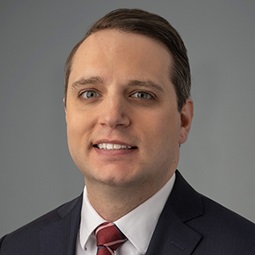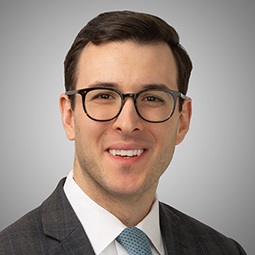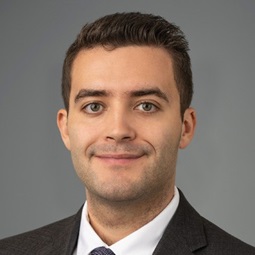Contributed by Abigail Lerner
On March 1, 2013, in an appeal linked to nine asbestos-related bankruptcy cases, covering a wide range of legal issues, involving dozens of law firms, and concerning a case characterized by the District Court of Delaware as “highly complicated” with “challenging circumstances,” the district court reversed the orders and opinions of the Delaware Bankruptcy Court and held that the bankruptcy court erred and abused its discretion in denying Garlock Sealing Technologies LLC access to exhibits attached to statements filed in compliance with Rule 2019 of the Federal Rules of Bankruptcy Procedure. Garlock, a manufacturer of sealing products and itself a chapter 11 debtor in a bankruptcy case pending in the Western District of North Carolina, has attempted for over two years to obtain the exhibits. Based on the district court’s decision, it now appears to have moved closer to achieving its goal.
As was the case with the nine debtors involved in the appeal, Garlock filed for chapter 11 protection to use the bankruptcy process to resolve all current and future asbestos claims against it. In its chapter 11 case, Garlock has been engaged in contentious litigation with lawyers for asbestos personal injury and wrongful death claimants over the magnitude of its present and future asbestos claims. An estimation proceeding is currently scheduled to occur this summer to determine Garlock’s liability for mesothelioma claims. In connection with preparing for that proceeding and assessing its own asserted asbestos related liability, Garlock sought to obtain information about asbestos claimants through the exhibits to the 2019 statements filed by the claimants’ attorneys in other asbestos related bankruptcy cases. Garlock has stated that it believes that by comparing the 2019 exhibits filed in such cases with the discovery Garlock received in the tort system, Garlock may be able to verify whether lawyers and claimants were lying about the claimants’ exposure to Garlock’s products and the injuries the claimants may have sustained through such exposure.
Under Bankruptcy Rule 2019, any law firm representing more than one creditor in a chapter 11 bankruptcy case must file a verified statement disclosing, among other things, the name and address of each creditor the firm represents and the nature and amount of such creditor’s claim. See Fed. R. Bankr. P. 2019(b)&(c). Beginning in 2004, the Delaware Bankruptcy Court entered orders in the pending Delaware asbestos chapter 11 cases requiring all law firms that appeared for multiple asbestos personal injury claimants to comply with Bankruptcy Rule 2019 by filing verified statements on the bankruptcy court’s public docket and submitting to the clerk of the bankruptcy court compact discs with the individual claimant information required by Bankruptcy Rule 2019. Although the exhibits to the 2019 statements were not formally sealed, the bankruptcy court ordered that they be made available to third parties only upon court order.
In addition to pursuing discovery to obtain the information included in the 2019 exhibits through litigation in its own chapter 11 case, in early 2011, Garlock filed a motion with the Delaware Bankruptcy Court seeking access to the 2019 exhibits. The bankruptcy court concluded, however, that, with respect to those reorganized debtors whose cases were closed, Garlock would have to first seek to reopen the cases. Garlock did so, and seven months later the bankruptcy court issued a memorandum opinion and order denying Garlock’s motions. In its memorandum opinion, the bankruptcy court concluded that Garlock lacked standing to seek access to the 2019 exhibits in the other asbestos debtors’ cases, that collateral estoppel barred Garlock from re-litigating an issue as that the bankruptcy court had decided when the 2019 orders were entered in 2004, and that Garlock’s desire to use the 2019 exhibits in pending and potential litigation was an improper purpose for granting a right of access. Garlock appealed from that decision to the Delaware District Court.
The main premise of Garlock’s argument on appeal was that the bankruptcy court failed to apply the Third Circuit standards governing the public’s right to access documents filed in federal court as set forth in Goldstein v. Forbes (In re Cendant Corp.). Instead, Garlock contended, the bankruptcy court improperly placed the burden on Garlock to demonstrate a proper purpose, rather than requiring the objecting parties to demonstrate the impropriety of Garlock’s purpose.
Before addressing the right of access issue, the district court considered whether Garlock had standing to seek access to the 2019 exhibits and whether Garlock had standing to appeal. Citing the Third Circuit and agreeing with Garlock’s position on the matter, the district court found that “third parties have standing to challenge protective orders and confidentiality orders in an effort to obtain access to information or judicial proceedings” and that “in order to have standing, the third party need only show an obstacle that prevents access to a judicial record.” Here, the district court concluded, because Garlock was a member of the public and faced an obstacle to obtaining access to the 2019 exhibits, Garlock had standing. Further, disagreeing with the appellees, which had argued that Garlock must meet the Third Circuit’s prudential standing requirement to gain standing to appeal, the district court ruled that “[t]he same interests which gave Garlock standing in the Bankruptcy Court persist and give Garlock standing to press its appeals” and that “[n]othing in the prior litigation . . . holds that denial of a request for access to 2019 Exhibits for the purpose to which Garlock intends to use them . . . is an insufficient interest to press on appeal.”
The district court not only ruled that Garlock had standing to seek access to the 2019 exhibits and to appeal, but it also ruled that neither collateral estoppel nor res judicata barred Garlock from seeking the 2019 exhibits. As to collateral estoppel, the district court held that, although the 2019 orders had been challenged in previous asbestos-related bankruptcy cases, there had been no decision in any other litigation that spoke to Garlock’s right as a member of the public to access the 2019 exhibits. Similarly, as to res judicata, the district court held that there was no basis to conclude that Garlock raised the same claim in any of the bankruptcy cases which resulted in a final order.
After having concluded that nothing barred Garlock from seeking relief in the Delaware chapter 11 cases to obtain the 2019 exhibits, the district court turned to the issue at the center of the controversy – whether the presumption of a right of access had been rebutted. In beginning its analysis, the District Court quoted Goldstein v. Forbes, where the Third Circuit held that “[i]n order to override the common law right of access, the party seeking the . . . sealing of part of the judicial record bears the burden of showing that the material is the kind of information that courts will protect and that disclosure will work a clearly defined and serious injury to the party seeking closure.” According to the district court, the appellees failed to demonstrate that the interest in security, for example protecting against misuse of potential asbestos’ claimants personal information, outweighed the presumption of public access. While the district court recognized that Garlock seeks to use the information contained in the 2019 exhibits for purposes other than what was intended by Bankruptcy Rule 2019, that fact, held the district court, did not rebut the presumption of public access to judicial records.
Having concluded that the presumptive public right of access to the 2019 exhibits had not been rebutted, the district court granted Garlock access, but also imposed certain limitations. The district court ruled that Garlock may be provided access to the 2019 exhibits solely for the purpose of using them in connection with Garlock’s estimation proceedings. Further, the court prohibited Garlock from publicly disclosing information contained in the 2019 exhibits except in an aggregate format that does not identify any individual. In addition, the court held that before there is any disclosure of the information Garlock extracts from the 2019 exhibits, Garlock must propose a form of protective order for the bankruptcy court presiding over its case to consider. Finally, the district court noted that Garlock had not sought retention agreements between lawyers and potential claimants and that Garlock should not be granted access to such agreements. These limitations, the district court noted, should protect against the harms the bankruptcy court had envisioned would occur as a result of granting Garlock access to the 2019 exhibits.
Whether or not the district court’s decision will affect the extent to which claimants are willing to disclose certain information in court filings and whether claimants will continue to opt to retain counsel who are required to file 2019 statements has yet to be seen. What is clear, however, is that, at least in Delaware, the public can almost certainly be assured they will be afforded a right of access to judicial records such as 2019 exhibits.
Weil, Gotshal & Manges LLP represents Armstrong World Industries, Inc., one of the reorganized debtors as to which Garlock is seeking access to 2019 statements.
Printed from
Weil Restructuring Blog

|
|
|
Access Granted: Delaware District Court Rules that Public Has a Presumptive Right of Access to 2019 Statements
Copyright © 2024 Weil, Gotshal & Manges LLP, All Rights Reserved. The contents of this website may contain attorney advertising under the laws of various states. Prior results do not guarantee a similar outcome. Weil, Gotshal & Manges LLP is headquartered in New York and has office locations in Boston, Brussels, Dallas, Frankfurt, Hong Kong, Houston, London, Los Angeles, Miami, Munich, New York, Paris, Silicon Valley and Washington, D.C.
|












